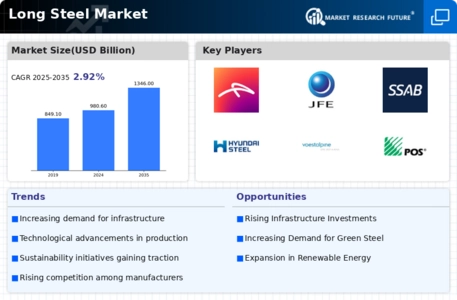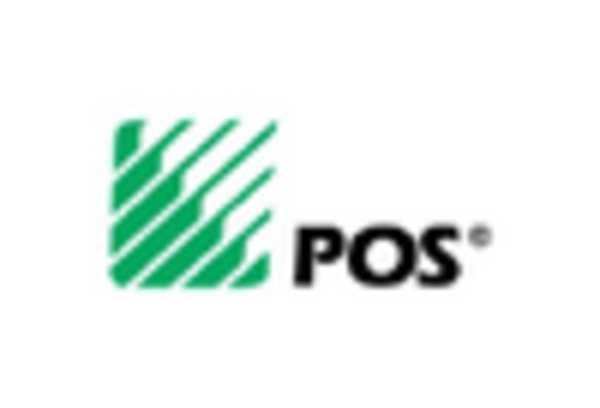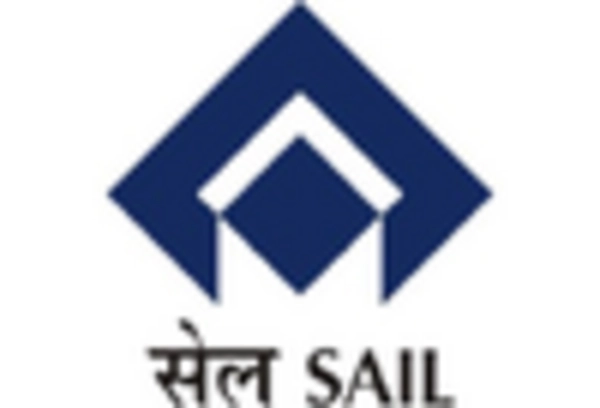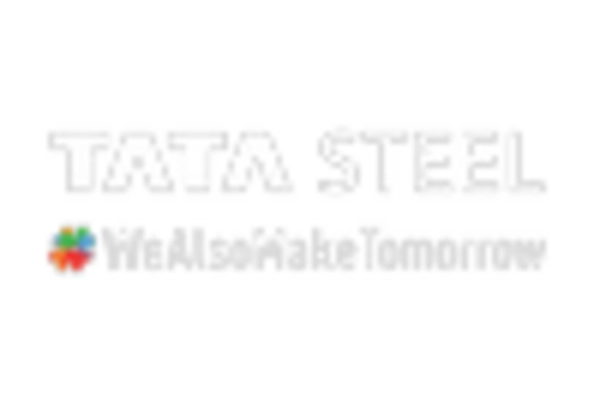Technological Innovations
Technological advancements are playing a pivotal role in shaping the Long Steel Market. Innovations in production processes, such as the adoption of electric arc furnaces and advanced steelmaking techniques, are enhancing efficiency and reducing costs. These technologies not only improve the quality of long steel products but also contribute to sustainability efforts by minimizing carbon emissions. In 2025, it is anticipated that companies investing in these technologies will gain a competitive edge, potentially increasing their market share. The integration of technology into production processes indicates a transformative phase for the long steel market.
Infrastructure Development
The Long Steel Market is currently experiencing a surge in demand driven by extensive infrastructure development projects. Governments and private sectors are investing heavily in building roads, bridges, and railways, which require substantial quantities of long steel products. For instance, the construction of new urban transit systems and highway expansions is projected to increase the demand for rebar and structural steel. In 2025, the estimated growth rate for the long steel segment is around 4.5%, reflecting the ongoing commitment to infrastructure enhancement. This trend indicates a robust pipeline of projects that will likely sustain the long steel market's growth trajectory.
Construction Sector Recovery
The Long Steel Market is benefiting from a notable recovery in the construction sector. As residential and commercial construction activities ramp up, the demand for long steel products such as beams and rebar is expected to rise. In 2025, the construction sector is projected to grow by approximately 5%, driven by increased housing starts and commercial developments. This resurgence is likely to bolster the long steel market, as these materials are essential for structural integrity. The interplay between construction growth and long steel demand suggests a favorable outlook for manufacturers and suppliers in this industry.
Regulatory Frameworks and Standards
The Long Steel Market is increasingly influenced by evolving regulatory frameworks and standards aimed at enhancing safety and sustainability. Governments are implementing stricter regulations regarding construction materials, which necessitates compliance from manufacturers. This shift is likely to drive demand for high-quality long steel products that meet these new standards. In 2025, the emphasis on compliance and quality assurance may lead to increased investments in research and development within the long steel sector. Consequently, this regulatory environment could foster innovation and elevate the overall standards of long steel production.
Rising Demand from Renewable Energy Projects
The Long Steel Market is witnessing a growing demand stemming from renewable energy projects. As countries shift towards sustainable energy sources, the construction of wind farms, solar power plants, and other renewable infrastructure is on the rise. These projects require substantial amounts of long steel for structural components, such as towers and frames. In 2025, the renewable energy sector is expected to expand significantly, which could lead to a corresponding increase in long steel consumption. This trend highlights the potential for long steel manufacturers to diversify their client base and tap into new markets.


















Leave a Comment